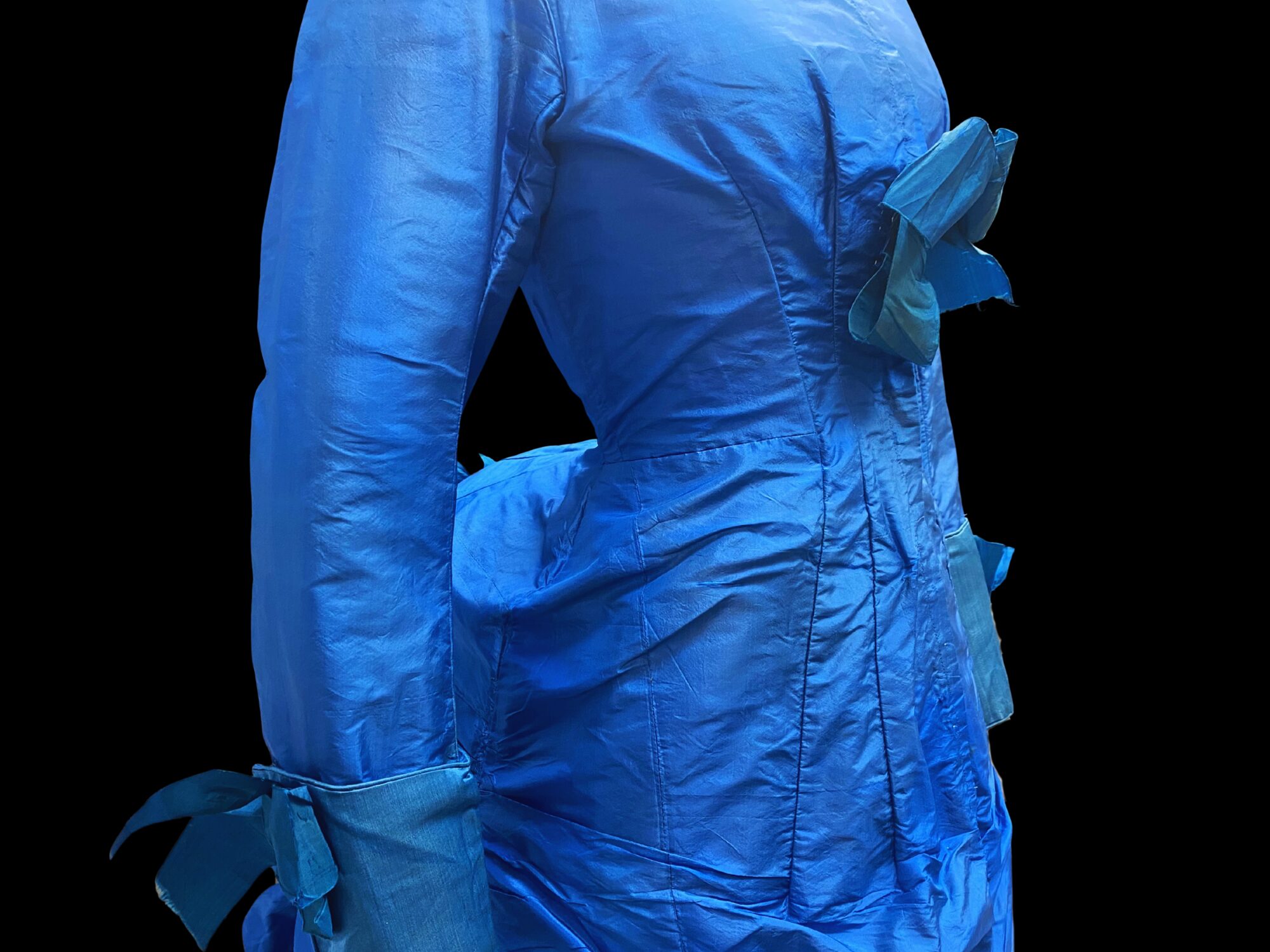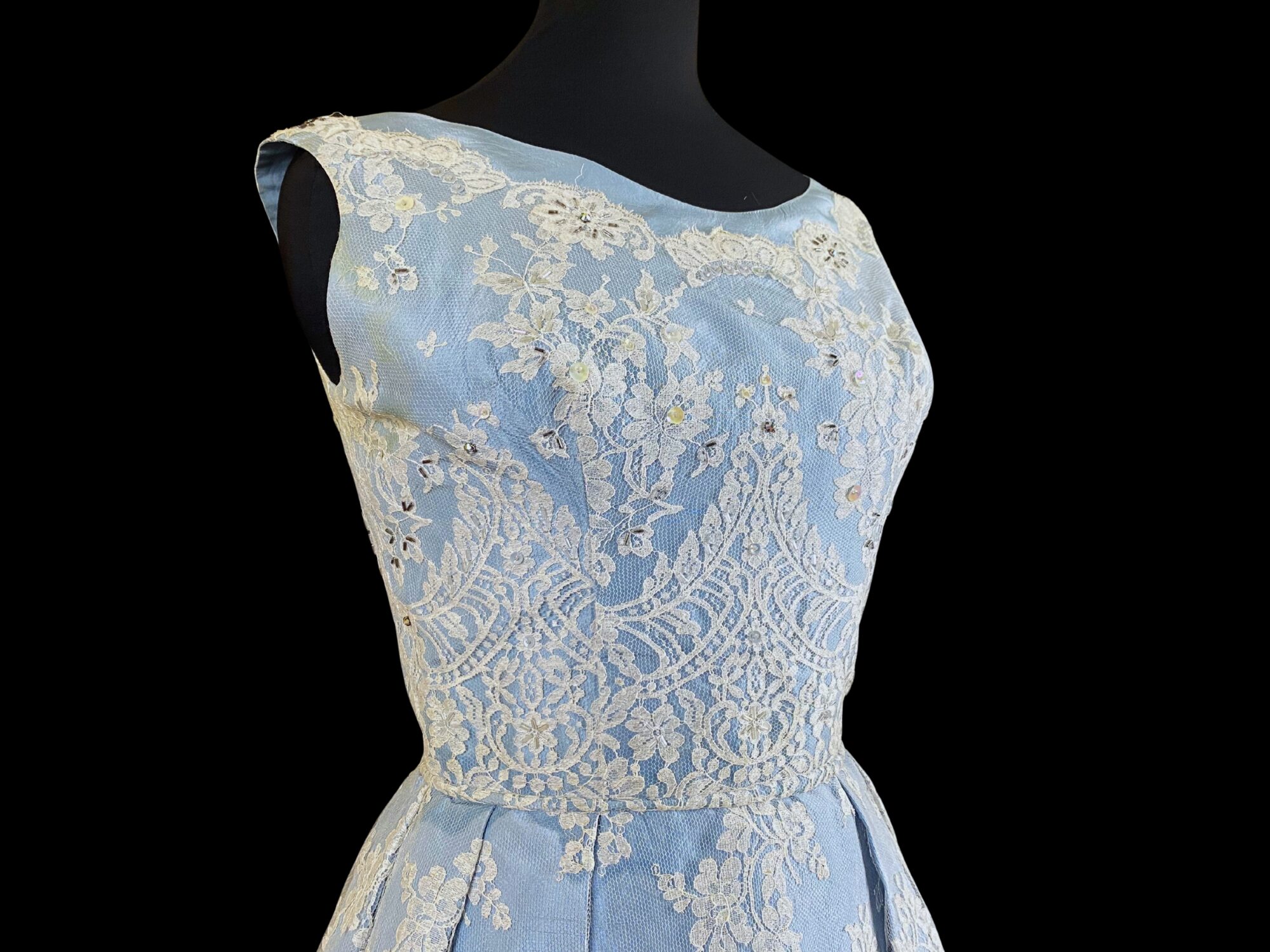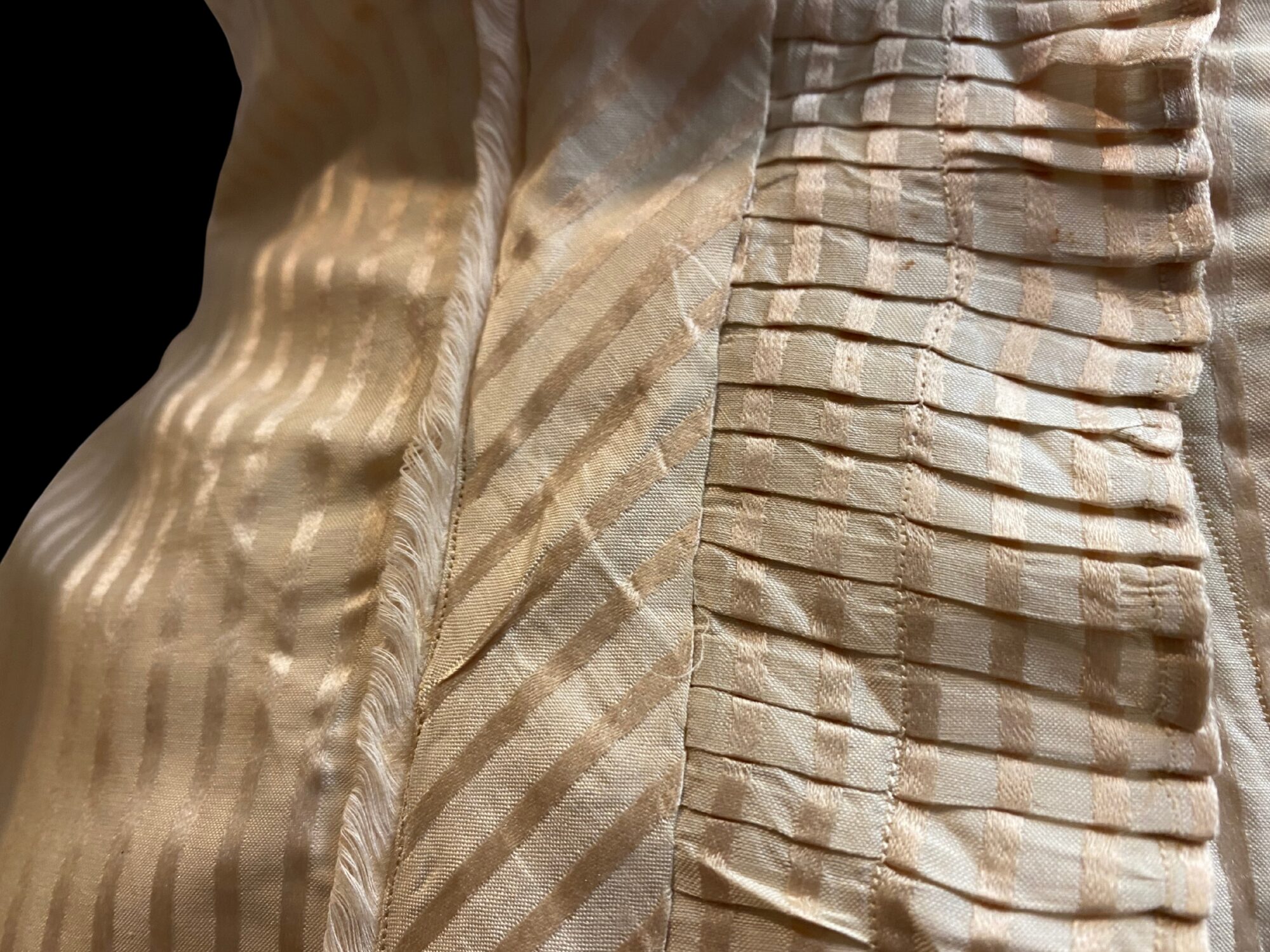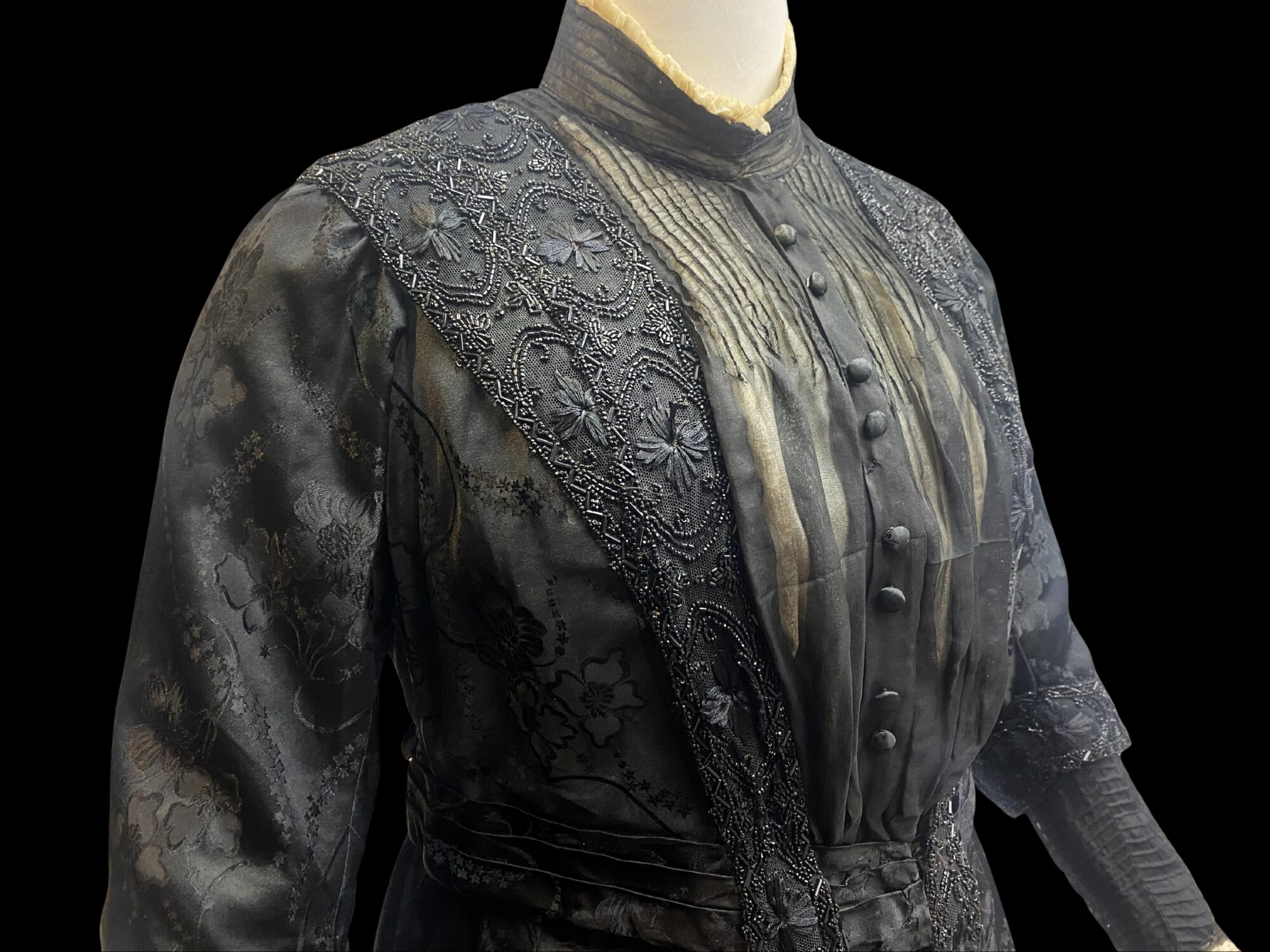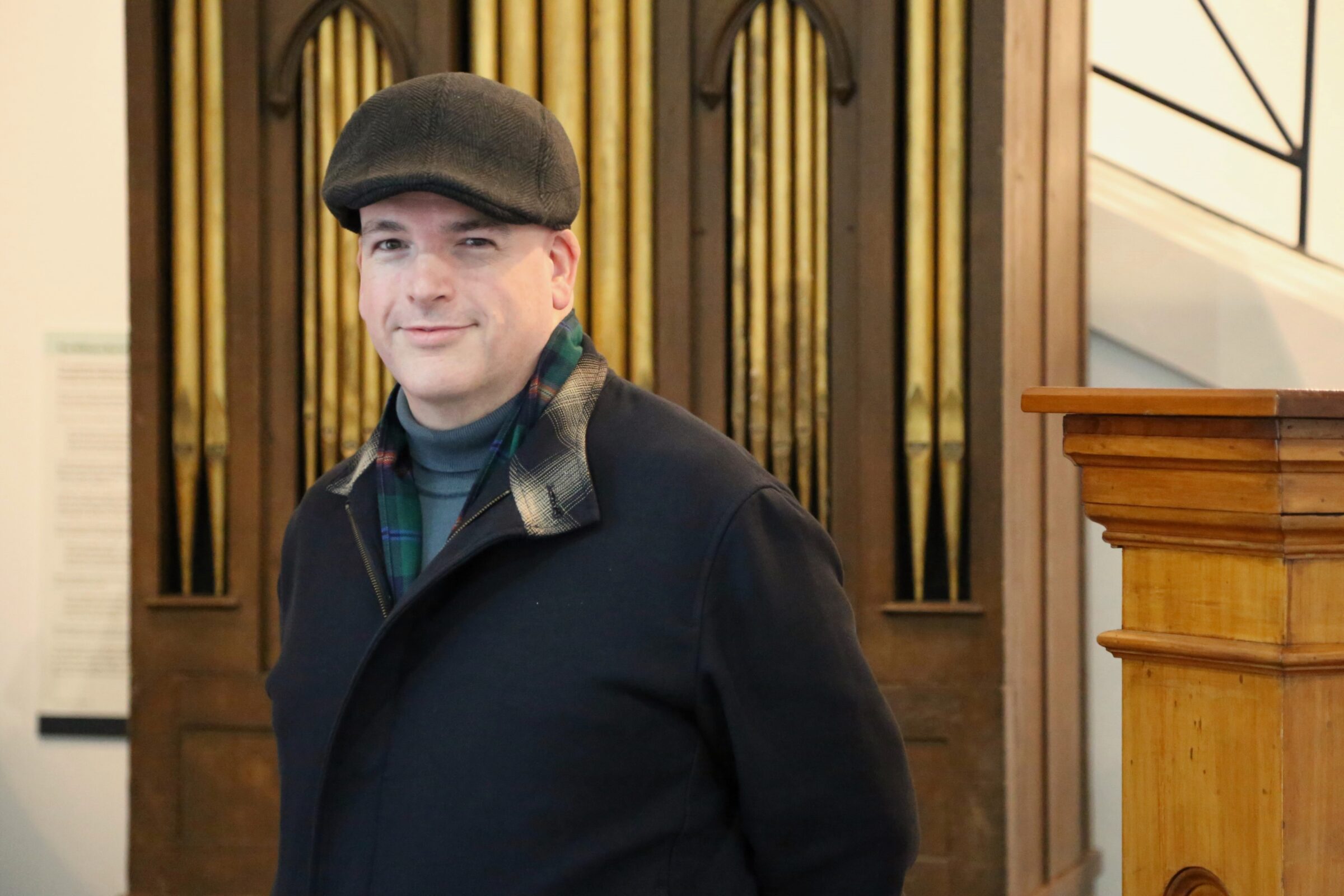Collection Stories
This loose-fitting evening coat in a ‘flapper’ style, is from the period of the Roaring Twenties, a time of dramatic social, economic and political change. It was the start of the modern era defined by the development and adoption of new or recent technology like electricity, radio, cinema, gramophones and motor cars, all of which accelerated social and cultural change. In many ways, this was the decade in which ‘modern’ New Zealand came of age. It was a period of boom before the bust that was to follow with the Depression.
‘Flapper’ fashion rejected restrictive clothing layers and corseting and was designed for greater bodily freedom, comfort and a lighter, more natural look.
Although the coat design is simple, the fabrics used were rich and luxurious. Made from a rich lamé-based devoré velvet fabric, it is decorated with pink and brown roses. Devoré, a technique devised in France in the 19th century, is a fabric technique used on mixed fibre velvets, where a paste is used to burn through cellulose fibres, leaving the woven protein fibres behind in a semi-transparent pattern or design. This was very popular in the 1920s. The coat is finished with a draped fox fur collar and large gauntlet cuffs.
The owner of the coat was Jeannie (known as Jean) Lambert. She was born in 1890 to Scottish parents James and Jane Gordon Martin. At some point in the late 1910s, Jean met an English Anglican vicar who worked for the Society for the Propagation of the Gospel in Foreign Parts. The Reverend Walter Warfield Lambert had been stationed in South Africa, India and New Zealand but returned to England, in 1919. In 1921 he was sent to Port Antonio, in Jamaica where Jean joined him, and where they married.
The couple travelled to England and returned to New Zealand in 1922 where Walter served in Nelson Cathedral. In 1923 he went to the diocese of Waiapu as vicar and the following year was appointed to Whakatane. In 1931 Walter was forced to retire from his church duties due to ill health and the couple settled in Whanganui where Jean’s mother had remarried and settled.
Walter’s health improved and he started deputising other vicars on leave. This work took him to many parts of the lower North Island, serving in Johnsonville, Hāwera, Manaia, Ōpunake, Paraparaumu, Greytown and Whanganui East. His last post was as part-time priest-in-charge of St Chad’s Church on St John’s Hill, where he served until his death in 1944.
Outside church duties the couple were active in musical, dramatic and elocution activities. When the famous female aviator Jean Batten visited Whanganui in 1934, the couple performed an ‘amusing sketch’ to entertain the 100 guests at a Rotary function. They were also prominent in the Wanganui Repertory Society, acting and producing productions. Jean was a member of the Westmere Women’s Institute, which had its own Drama Circle, producing plays in the Westmere Hall.
Jean would have stolen the show in this coat. She had exquisite dress sense, and upon her death in 1975, a large collection of her clothes and other household material was donated to the Museum.
By Trish Nugent-Lyne, Kaihāpai Taonga/Collections & Curatorial Lead at Whanganui Regional Museum.
Image: Jean Lambert’s Evening Coat
Mid to late 1920s. Maker: unknown.
Photographed by Kathy Greensides
WRM 1975.46.72
View the full-length image.


